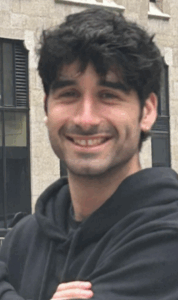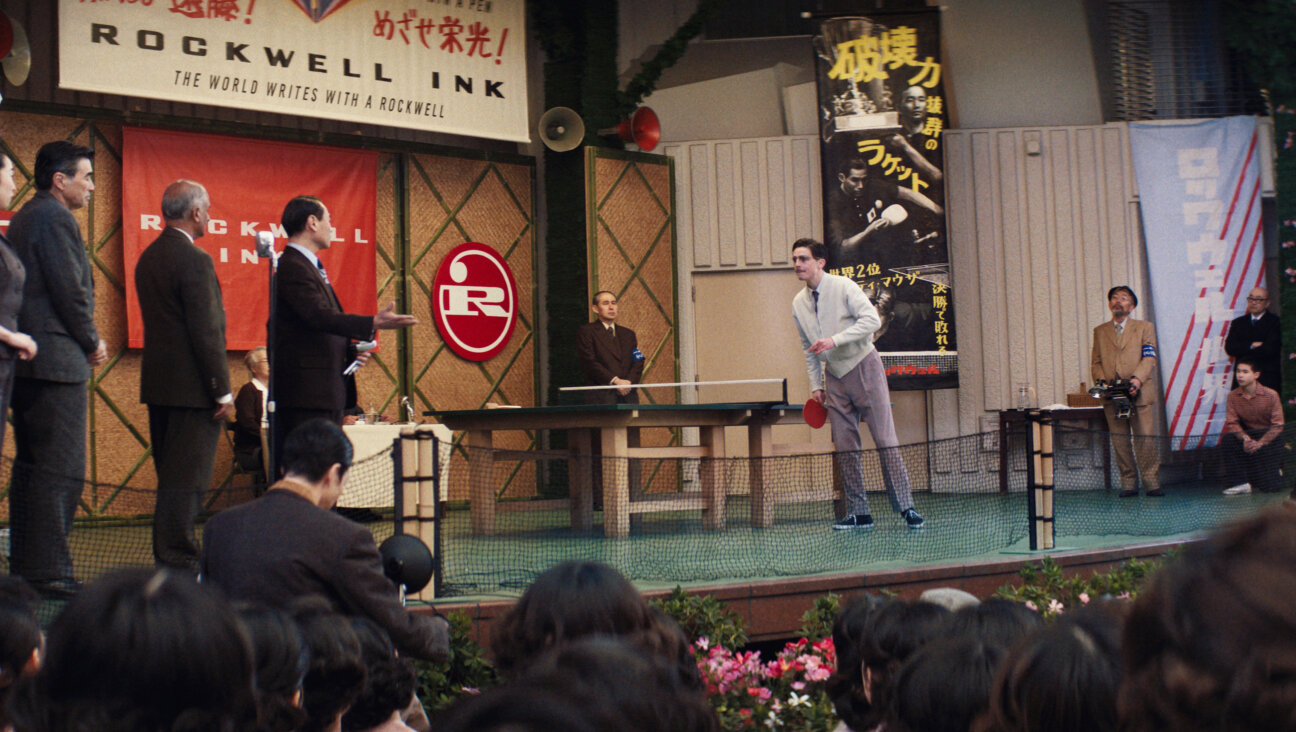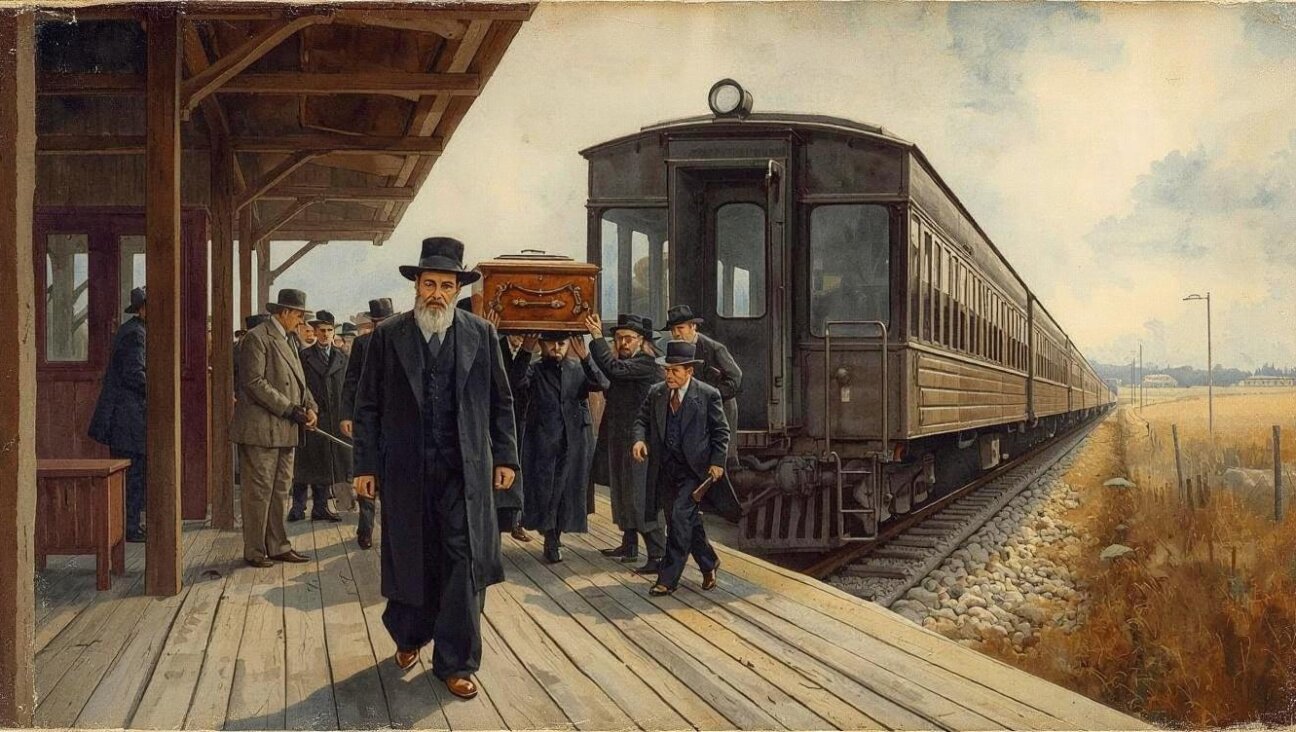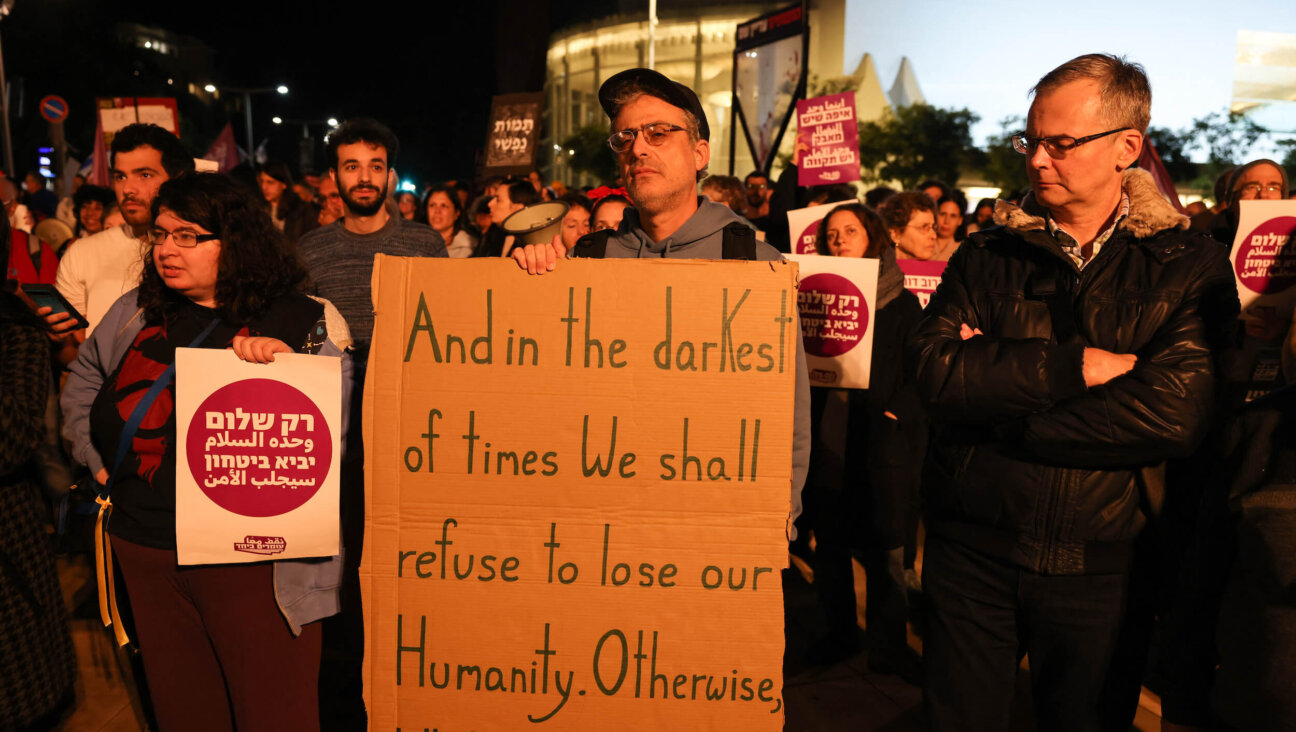How a curator and a rabbi joined forces to keep a piece of Boston’s Jewish history alive
When Chelsea’s Orange Street Synagogue shuttered in 1999, the fate of its elegant Torah ark hung in the balance
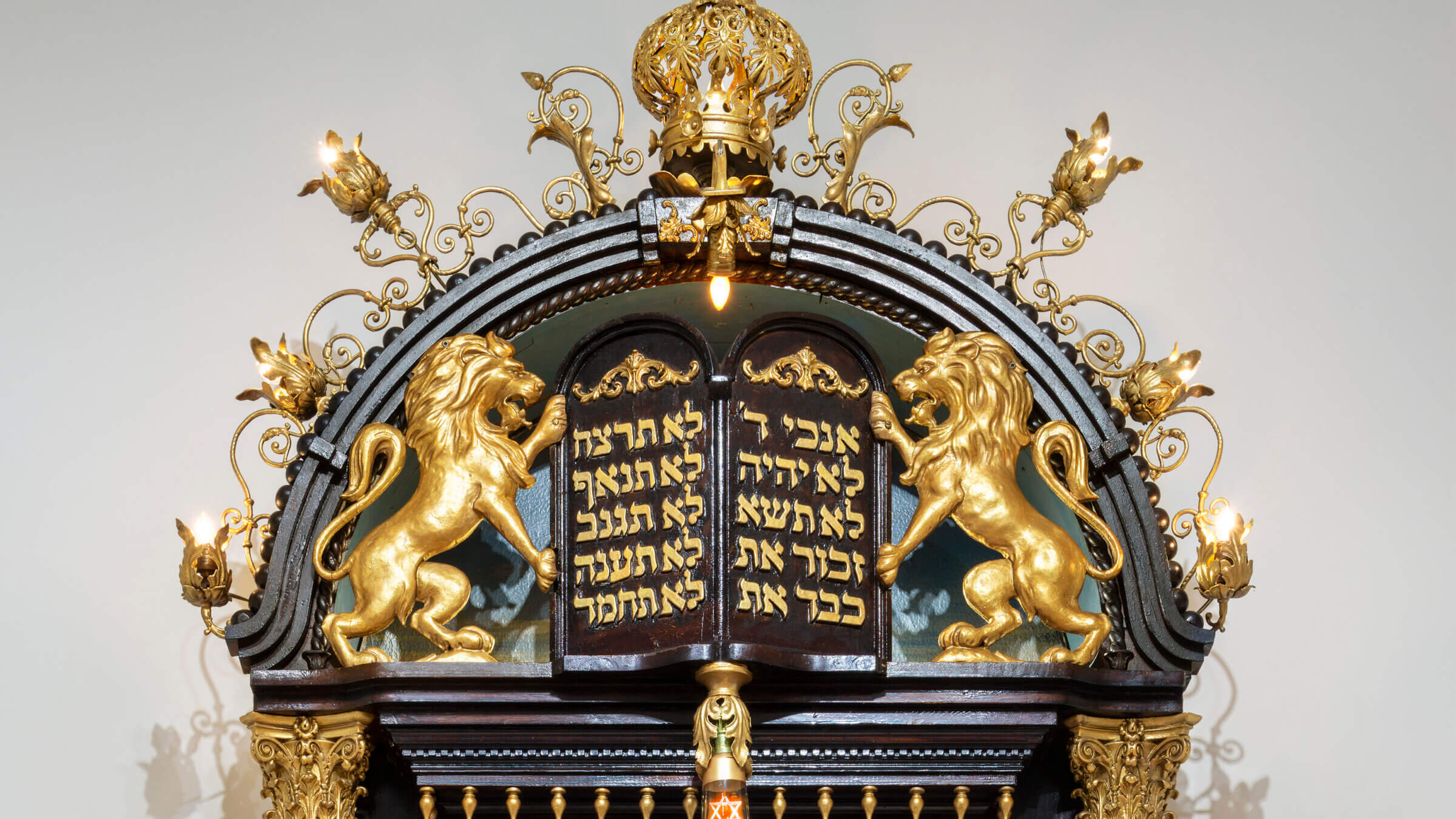
The top of Sam Katz’s wooden Torah ark, featuring a pair of golden lions and a Torah crown Courtesy of Museum of Fine Arts, Boston
The most striking artifact in the Judaica collection at Boston’s Museum of Fine Arts isn’t from Yemen or Galicia, or any other far-flung Jewish community that’s long since dispersed; it’s from Chelsea, Massachusetts.
The magnificent wooden Torah ark is just shy of 12 feet tall, and until 1999 it was the centerpiece of the Orange Street Synagogue, in Chelsea, a town outside Boston that once teemed with so much Jewish life it earned the nickname ‘Little Jerusalem.’
But with American synagogues now closing at a record pace, the arks and facades and stained glass windows that testified to American Jewry’s dynamism face an unsettled future.
Indeed, to make the short hop from Chelsea to northeast Boston, the MFA’s ark took a rather scenic — even biblical — route. There’s a last-gasp reprieve as destruction looms; an extended stint in a wilderness of sorts (Texas); and a healthy sprinkling of rabbinic wisdom.
All the same, it illuminates an often forgotten chapter in Boston’s Jewish story.
A thriving Jewish enclave
Around the turn of the 20th century, tens of thousands of mostly eastern European Jewish immigrants arrived in Chelsea, transforming a provincial Protestant outpost into a chiefly working-class center of Jewish cultural, religious and economic life. By 1920, it had between 15 and 20 synagogues; a Hebrew School that graduated over 400 people a year; and dozens of clubs and organizations that held their meetings in Yiddish.
One of its more well-known inhabitants was Sam Katz, a Galician immigrant who was, for a time, Massachusetts’ pre-eminent woodcarver. Katz was born in 1884 in Veshnevets, modern Ukraine, and emigrated to the US in 1910. He lived briefly in upstate New York before settling in Greater Boston, where, even though he lacked formal training, he built an estimated 24 synagogue arks during the 1920s and 30s. “These immigrant wood carvers, in general, learned from their father and their grandfather,” said Simona Di Nepi, Charles and Lynn Schusterman Curator of Judaica at the MFA.
Still, Katz found his own style. “When I see vine leaves and grapes and these kinds of lions,” Di Nepi told me, pointing to a pair of gilded lions affixed to either side of the MFA’s ark, “I know that it’s Sam Katz.” Perched on top of the ark is a bald eagle, jostling for position with a Torah crown. Taken together, said Di Nepi, the sculptures are a kind of shorthand for the burgeoning Jewish-American culture Chelsea represented. Indeed, this is one of the gallery’s abiding themes: the various ways artists have combined age-old Jewish iconography with time- and place-specific motifs.
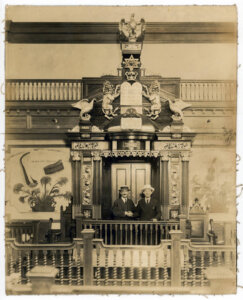
The ark needs a hero
By 1950, Jewish Chelsea had entered a terminal decline. Many of its inhabitants had moved to tonier Boston suburbs like Brookline or Newton, propelled by improving socio-economic mobility, though the construction of the Tobin Bridge between 1947 and 1950 also pushed out some 250 families and effectively split the Jewish community in two. In early 1999, the Orange Street Katz Torah ark closed for a final time, its fate uncertain.
That’s when rabbi David Whiman, a congregational rabbi in nearby Newton, and an avid Judaica collector, stepped in.
Whiman salvaged the ark alongside a small crew of friends. A small screen in the gallery plays grainy footage of Whiman in an oversized white T-shirt, smiling broadly. Though the Orange Street shul pews are empty, and the work laborious, Whiman and his group appear noticeably upbeat. The opportunity to preserve such an invaluable link to Chelsea’s Jewish past is, clearly, a happy one. (Whiman, rabbi emeritus at North Shore Synagogue, did not respond to an inquiry.)
Whiman kept the ark with him as his rabbinical career took him first to Houston, where he stayed for the better part of decade, and, later, to Syosset, Long Island. And then, at the height of the COVID-19 pandemic, he emailed Di Nepi. He had heard the MFA was establishing a permanent Judaica collection. “He initially said, ‘I’m a collector, and you can have anything you want,’” Di Nepi recalled.
She was especially taken with the ark because of its local ties. “There were other things that I might have been interested in,” she said, “but this was so much a Boston story — a local story.” In 2022, alongside Christine Storti, the MFA’s Head of Furtiture and Frame Conservation, Di Nepi went to Syosset to assess the ark’s condition.
It bore the scars of nearly 20 years in storage. “All the attached pieces were in a box,” Di Nepi said. “And the wood had marks all over it.” Over six months, the MFA’s Conservation department, led by Storti, restored the ark’s original flourishes: On top, an eagle and a torah crown; just below, two golden lions and three Magen Davids; and, in the middle, two gilded hands of Kohanim clasped together in prayer. Di Nepi then placed the renovated ark on a bimah-esque plinth, where it remains today, resplendent in the dim gallery light.
For every rescued Torah ark, however, are dozens that couldn’t overcome the demographic and cultural changes that have reshaped American Judaism during the past half-century. “There used to be a high demand for Torah arks,” Di Nepi said. “But now, we have the inverse situation, where there is mass demand for finding homes for arks that are closing.”
The Sam Katz ark is therefore a monument to a community that’s largely slipped from view. Yet there’s one fragment of Jewish Chelsea that’s proved remarkably durable. The glass light bulb Katz hung from the ark more than a century ago still works, Di Nepi told me, though she and Storti opted against displaying it, given its obvious fragility, and commissioned a replica. I am nevertheless consoled by the thought that somewhere in the Museum of Fine Arts’ storage there’s a tiny piece of Jewish Chelsea, waiting to shine again.
